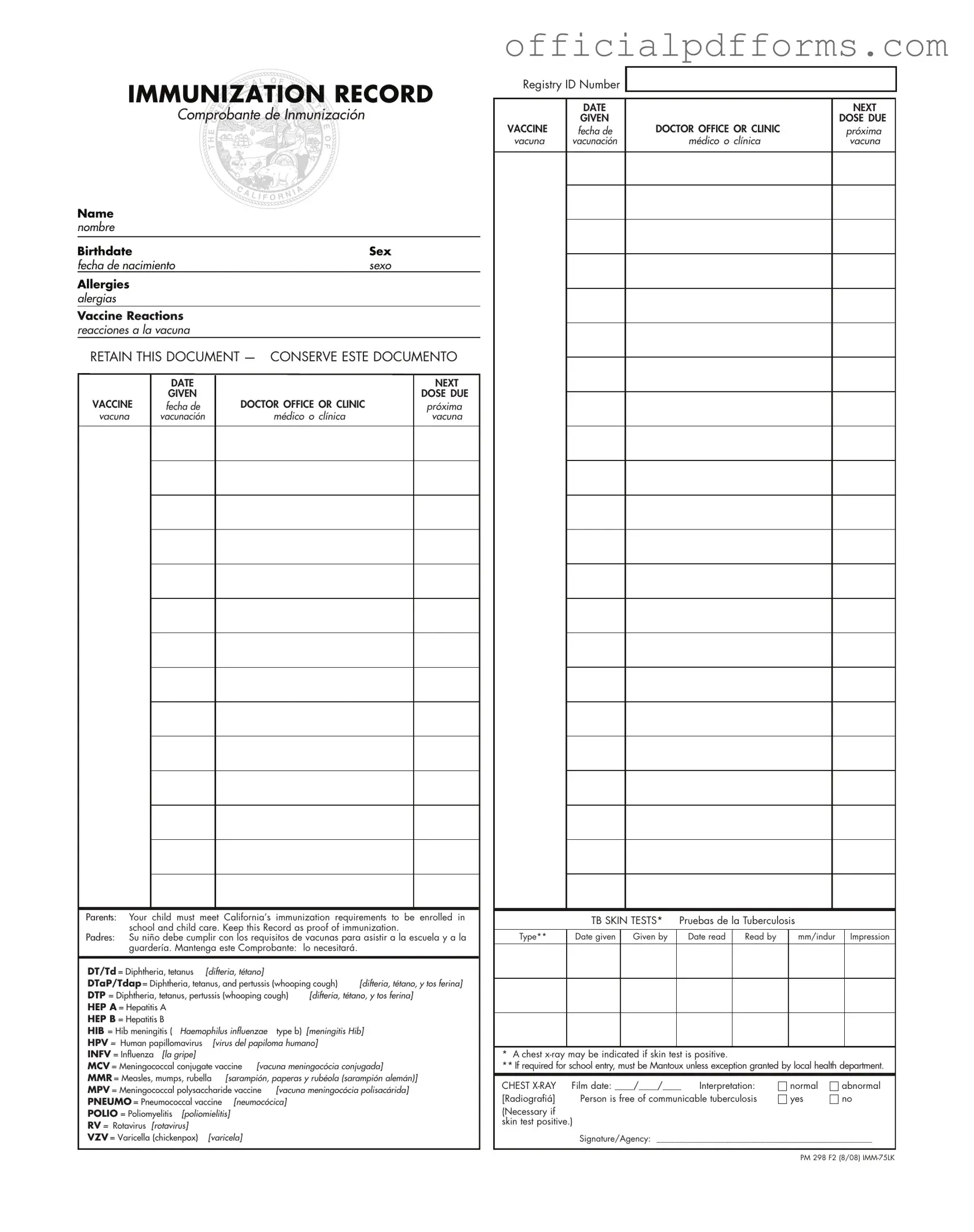The Immunization Record form serves as an official document that tracks a child's vaccinations. It is essential for parents to maintain this record as proof of immunization, particularly for school and childcare enrollment in California. The form includes details such as the child's name, birthdate, and the specific vaccines received, ensuring that all immunization requirements are met.
The Immunization Record contains several key pieces of information:
-
Child's name and birthdate
-
Sex of the child
-
Allergies, if any
-
Vaccine reactions experienced
-
Dates of vaccines given and due
-
Doctor's office or clinic information
This comprehensive data ensures that all necessary immunizations are documented and can be easily referenced by healthcare providers or schools.
Why is it important to keep this document?
Keeping the Immunization Record is crucial for several reasons. First, it provides proof that a child has received the required vaccinations, which is often a prerequisite for school and daycare enrollment. Additionally, this record helps parents track upcoming vaccinations, ensuring that their child remains up-to-date on immunizations. Losing this document may lead to complications in meeting school requirements or scheduling future vaccinations.
What should I do if my child has allergies or vaccine reactions?
If your child has allergies or has experienced reactions to vaccines, it is important to document this information on the Immunization Record. Parents should consult with their child's healthcare provider to discuss any concerns. The provider can offer guidance on alternative vaccines or additional precautions that may be necessary to ensure the child's safety during immunization.
What vaccines are typically listed on the Immunization Record?
The Immunization Record includes a variety of vaccines that children are required to receive. Some of the most common vaccines listed are:
-
Diphtheria, Tetanus, and Pertussis (DTaP/Tdap)
-
Hepatitis A and B (HEP A, HEP B)
-
Influenza (INFV)
-
Measles, Mumps, and Rubella (MMR)
-
Varicella (chickenpox)
This list may vary based on state requirements and individual health considerations, so it is important to stay informed about the necessary immunizations for your child.
What if my child needs a TB skin test?
If a tuberculosis (TB) skin test is required for school entry, it must be the Mantoux test unless an exception is granted by the local health department. The Immunization Record form provides space to document the type of test, the date it was administered, and the results. If the skin test is positive, a chest x-ray may be necessary to confirm the absence of communicable tuberculosis. Parents should follow up with their healthcare provider for further instructions.
